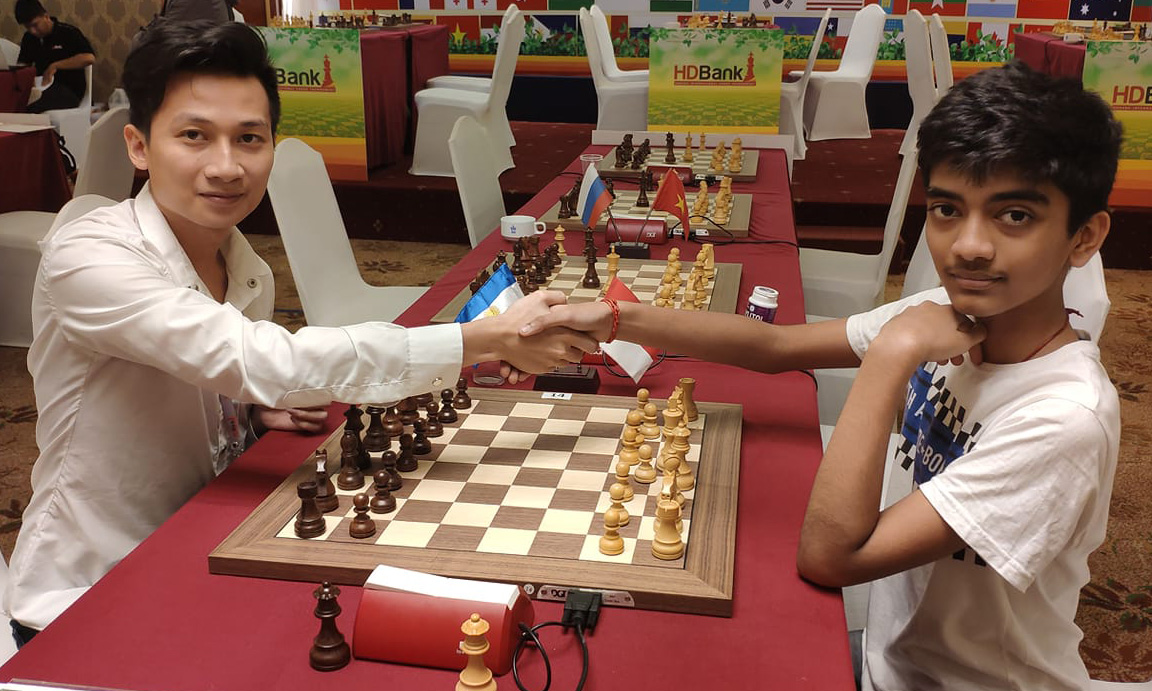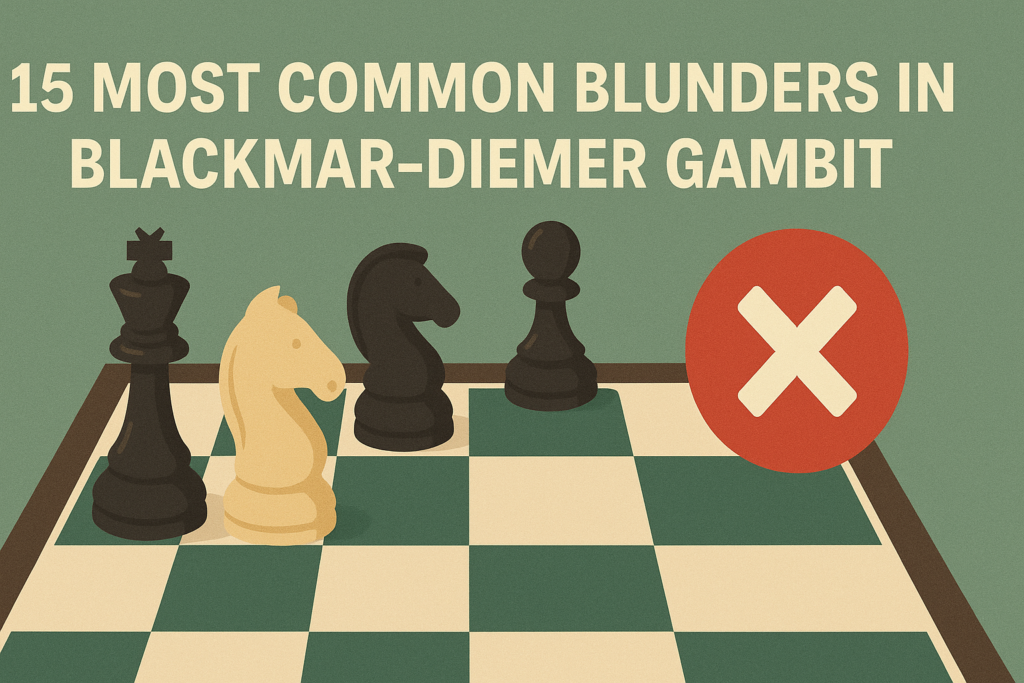The Blackmar–Diemer Gambit (BDG) is a bold and controversial chess opening where White sacrifices a pawn for rapid development and attacking chances.
Introduction
The Blackmar–Diemer Gambit (BDG) is one of the most aggressive and debated chess openings arising after:
- d4 d5
- e4 dxe4
- Nc3
White sacrifices a pawn early, aiming for rapid piece development, open lines, and a strong kingside attack. While rarely seen in top-level play, the BDG remains popular among club players and gambit enthusiasts due to its tactical complexity and dynamic possibilities.
History and Evolution
The gambit traces its roots to the Blackmar Gambit (1.d4 d5 2.e4 dxe4 3.f3), introduced by Armand Blackmar in the late 19th century. However, this early version was considered unsound due to 3…e5!, giving Black a strong counter.
The modern BDG emerged when Emil Josef Diemer (1908–1990) refined the idea by inserting 3.Nc3 before playing f3, preventing Black from easily consolidating. Diemer’s contributions popularized the gambit, leading to extensive analysis and a dedicated following.
Assessment: Sound or Unsound?
The BDG remains highly controversial:
- Critics (including GMs like Sam Collins and Andrew Martin) dismiss it as unsound, arguing that Black can defend and convert the extra pawn.
- Supporters (such as IM Gary Lane) argue that it’s a practical weapon at the club level, where tactical complications favor the gambiteer.
GM Boris Avrukh noted that while the gambit may not be fully sound, White’s initiative can be surprisingly potent. Similarly, GM Joe Gallagher acknowledged that Black must defend carefully to neutralize White’s attacking chances.
Main Variations
1. Main Line (5.Nxf3)
After 1.d4 d5 2.e4 dxe4 3.Nc3 Nf6 4.f3 exf3 5.Nxf3, Black has several key responses:
- Gunderam Defence (5…Bf5) – Black develops the bishop actively. White often plays 6.Ne5, targeting the bishop and preparing kingside expansion.
- Teichmann Defence (5…Bg4) – Pins the knight, but after 6.h3 Bxf3 7.Qxf3, White gains the bishop pair and open lines.
- Euwe Defence (5…e6) – A solid approach, transposing into a French-like structure.
- Bogoljubov Defence (5…g6) – Fianchettoes the bishop, but White can attack with 6.Bc4 Bg7 7.0-0 0-0 8.Qe1.
- Ziegler Defence (5…c6) – Considered the most critical, aiming for a solid setup.
2. Ryder Gambit (5.Qxf3)
A double-pawn sacrifice:
5.Qxf3 Qxd4 6.Be3 Qg4 7.Qf2 e5
White seeks rapid development and attacking chances, though Black can often consolidate.
3. Fourth-Move Alternatives for Black
- O’Kelly Defence (4…c6) – A flexible move order aiming for the Ziegler structure.
- Vienna Defence (4…Bf5) – Holds the pawn but allows 5.g4 Bg6 6.h4!?, leading to sharp play.
- Langeheinicke Defence (4…e3) – Returns the pawn but may leave Black slightly passive.
4. Lemberger Countergambit (3…e5!?)
A radical response:
3…e5!? 4.dxe5 Qxd1+ 5.Kxd1 Nc6
This leads to simplified endgames, often frustrating for gambit players.
The Lost Knight
The Pawn Check
Winning the Queen
The Checkmate
Another Checkmate
The Queen Sac Checkmate
The Pawn Sac
The Famous Smothered Mate
Another 17 Move Checkmate
The Queen Trap
The Rook Sac Checkmate
Checkmate by the Knight
The Queen Sac Checkmate by Bishop (Beautiful)
The Knight Checkmate (Happening 2 Times)
The Queen Trap by Bishop
Why Play the BDG?
- Tactical Complexity – Ideal for players who enjoy sharp, attacking chess.
- Psychological Edge – Many opponents are unprepared for the gambit’s complications.
- Development Practice – Helps improve piece coordination and attacking skills.
Conclusion
The Blackmar–Diemer Gambit is a high-risk, high-reward opening that thrives on initiative and tactical chaos. While not objectively the strongest choice, it remains a fun and practical weapon for club players and blitz enthusiasts.
As IM Tim Sawyer famously said:
“Stop playing for the endgame, play to end the game! Be a winner. Play the Blackmar–Diemer Gambit!”
Whether you embrace it as a main weapon or an occasional surprise, the BDG guarantees exciting and unpredictable chess.

I’m Xuan Binh, the founder of Attacking Chess, and the Deputy Head of Communications at the Vietnam Chess Federation (VCF). My chess.com and lichess rating is above 2300. Send me a challenge or message via Lichess. Follow me on Twitter (X) or Facebook.







2 thoughts on “Blackmar–Diemer Gambit and 15 Ways to Win”
Comments are closed.